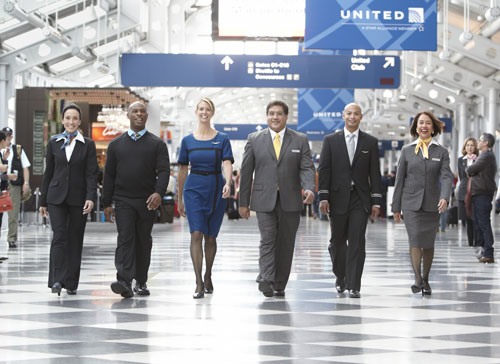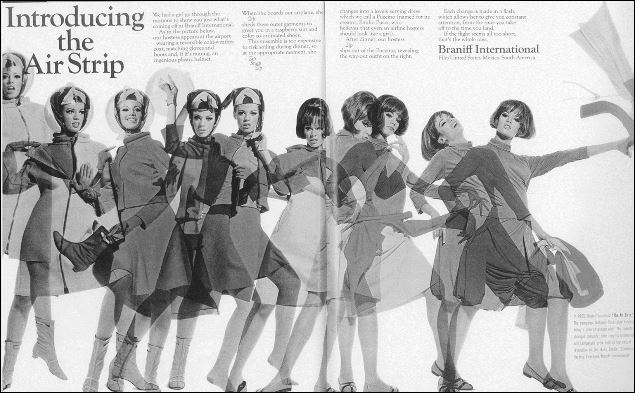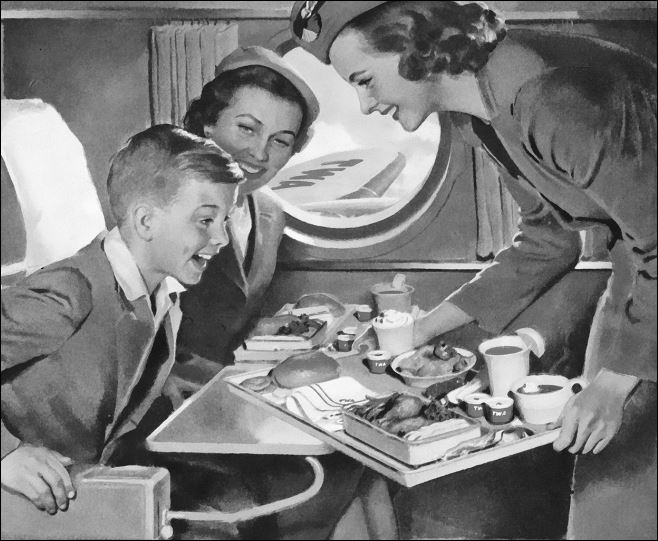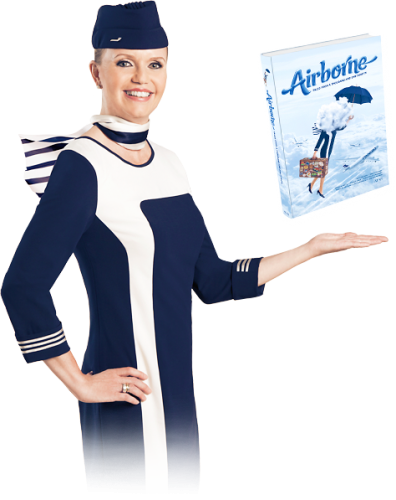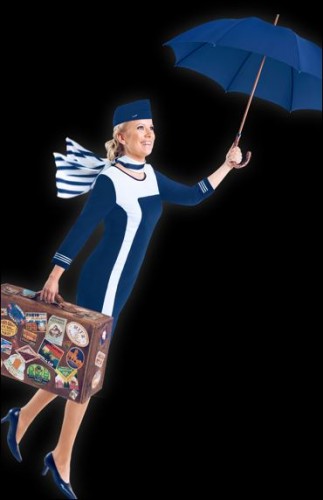Virgin America employees got swanky Banana Republic-designed uniforms last year. This past spring, Virgin Atlantic, All Nippon Airways and Qantas Airways unveiled fresh, designer-made duds for their teams as well.
Now flight attendants, customer service agents and many of the more than 64,000 United Airlines employees worldwide have shed their old work outfits for a new wardrobe that “brings all of our employees together in a cohesive look and lets our customers know that we’re all on the same team,” said United spokesperson Charles Hobart.
United’s new flight attendant uniforms, for example, are built around a core wardrobe of black trousers, skirts, sweaters, vests and blazers with two rows of silver braid on the sleeves. There are also two styles of dresses, including a blue dress with a black stripe detail.
To come up with what United describes as its “more modern, sophisticated wardrobe,” the airline asked its employees to give on-line feedback, serve on uniform review teams, vote for their favorite designs and wear-test a variety of garments “They told us that comfort, functionality and durability were elements of a uniform that were important to them, as well as something that looked good,” said Hobart.
“If United really did design these uniforms based on employee input for comfort and durability, I applaud them,” said Tiffany Hawk, a former flight attendant and author of “Love Me Anyway”, a novel about life at United Airlines. “Satisfying your employees should be far more important than satisfying fashion critics. Flight attendants work five or six legs a day, 20 days a month, so easy maintenance and durability is key.”
Fashion-wise, though, reaction to the new uniforms is decidedly ‘meh.’
“The overall look screams of function and comfort and not style. They seemed to have missed an opportunity to have made a more fashionable and current statement,” said Karen Giberson, president of New York-based Accessories Council.
“The new uniform looks depressingly like the old uniform and is not flattering at all. I’m deeply disappointed” said Cliff Muskiet, a KLM purser and curator of Uniformfreak.com, an on-line museum of flight-attendant uniforms. “After the merger with Continental, United had the chance to come up with a great new uniform, but they didn’t.”
(My story about new uniforms for United Airlines employees first appeared on NBC News.com Travel)
